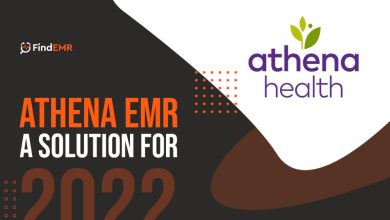
There are some downsides to disability. These disadvantages include limitations in benefits rules, discrimination towards people with disabilities or chronic illnesses, and barriers to access for people who have disabilities.
Discrimination in favor of people with disabilities or chronic illnesses
Despite federal law, people living with disabilities still face discrimination in the healthcare melbourne disability services . The Office for Civil Rights is responsible for protecting people with disabilities against discrimination. OCR also works with covered entities in order to resolve discrimination complaints.
In addition, there are a number of barriers to care for people with disabilities. These include lack of accessibility to medical equipment and facilities, inadequate training, and inability to provide individualized accommodations. Health disparities are more common in people with disabilities.
While it is difficult to quantify the number affected by disability-related disparities in health, there is evidence to suggest there are many groups that have disproportionately bad health outcomes. These include people who have physical disabilities, people who have mental health disabilities, or children with disabilities. Furthermore, disability-related problems in health can be directly related to underlying conditions.
These differences are caused by societal attitudes, legislation, as well as the physical environment. Health care providers may also impose stereotypes about disability to create barriers. They may incorrectly assume that people with disabilities do not have a poor quality of life or that people with disabilities do not feel pain.
Disability refers to a person’s significant impairment of function relative the normal standard. It can be cognitive, sensory or intellectual. Disability is a condition that results from an injury, a chronic disease, or an illness. Later in life, disability can also be acquired.
During a public health emergency, health care providers may violate federal law by discriminating against patients with disabilities. The Health and Human Services Office for Civil Rights (OCR) has developed provisions for civil rights protections in emergencies. Providers can deny coverage to persons with disabilities due to the existing third party payment structure.
Barriers to accessibility for persons living with disabilities
Despite strong protections under the law, the disabled community still faces barriers when seeking healthcare. Barriers can be both physical or attitudinal.
Inaccessible environments that restrict mobility are the most basic physical barriers. Doorknobs that are too small or heavy to be turned by someone with limited manual dexterity may be an example. Inaccessible lighting can also be included, which can make it difficult for people to see.
Communication barriers are also common. This can be a lack of sign language translation, a website lacking a video with captions and/or a large print option for someone who has a vision impairment.
Technology is also playing a key role in breaking down obstacles. Installing screen reader software can make websites more accessible. This software can alert people with low vision that the page has changed.
Attitudinal barriers are a type of barrier that is imposed by people’s ideas. They can cause prejudice and bullying, for example. For example, someone might think that a person with disabilities is poor and therefore not worth having to interact with them.
The best way of removing a barrier is to first understand it. This will help you to better identify the appropriate solution for a specific situation.
It’s important to remember that removing a physical barrier does not necessarily mean that you have to spend a lot of money. There are cost-effective solutions available that will help you get more customers. It can also help to consult with a local organization that specializes in the disability community.
Aside from these five basic barriers, there are many others. Accessibility is an ongoing process. Accessibility in your community can be improved by being aware of the many types of barriers.
Indirect discrimination
Discrimination can be defined as being treated unfairly due to a disability. While there are many laws in place to protect people with disabilities, some areas are not as strict as others. For example, if an employer does not hire a person with a disability, the employer may not be held responsible.
The Equality and Human Rights Commission (EHRC) provides information about discrimination. They also provide information about the different types discrimination, including direct and indirect.
Direct discrimination is a little more complex than the standard rules. This type of discrimination is typically based on negative attitudes towards disabled people. It can also involve imposing additional burdens on other people.
Indirect discrimination is a little more straightforward. This is when a practice or policy is applied to all employees of a comparison pool. It may also occur when a different organization or person carries out the discriminatory act.
Similar situations occur when an employer fails to make reasonable adjustments in order to accommodate employees with disabilities. This could mean that an employer refuses to allow employees to work in a different location or makes it difficult for them access the break room.
Although there are many laws that are designed to protect people from discrimination they do not always consider the needs of those with disabilities. This is especially true for people with mobility impairments.
This includes a requirement that applicants must be clean-shaven in order to be eligible for a job with the food handling section.
Restrictions in benefit rules
Whether you’re considering applying for disability benefits, or are already receiving them, there are certain rules that you should be aware of. These rules can affect your eligibility and your ability for employment.
The most obvious rule is that full-time work is not possible. You may be able work part-time. You must have enough work credits to be eligible for disability benefits. Your age at the time you become disabled will determine how many credits you need. In general, younger workers are able to qualify with fewer credits.
Employers must decide whether their employee can work. It is possible to ask questions about your employee’s disability. For example, whether it is serious enough for them to be eligible to receive disability benefits. You might also ask your employee for medical documentation. You may also want to talk to your employee about reasonable accommodations.
The ADA defines a “disability,” as a condition that substantially limits one or several major life activities. The Rehabilitation Act and Section 504. of the Americans with Disabilities Act apply the same standards.
A “substantial gains activity level” or “SGA”, is the minimum level of earnings required to qualify for disability benefit. This level is $1,350 per month in 2022. This amount increases every year.
A condition that is “directly threatening” is one that is at high risk of serious harm. A disability-related medical exam can help you determine if there is a direct threat. A medical exam is not always necessary. In some cases, however, a vocational consultant may be necessary to offer an opinion.
An employer might make reasonable accommodations to enable a person with disabilities to enjoy equal employment opportunities. This might include allowing someone to stand for only fifteen minutes before taking a break.
Police officers can help with the treatment of intellectually disabled persons
It can be difficult to provide people with intellectual disabilities with a meaningful, practical way to interact with the criminal justice system. They may not be able understand the questions, their rights, or follow orders. They may also struggle with managing their emotions.
It is important to understand that not all people with intellectual disabilities are criminals. Many of them are victims. Many people with intellectual disabilities are forced to commit crime or coerced.
Individuals with intellectual disabilities must be treated in a new way by the criminal justice system.
Many law enforcement agencies have little or no training about disabilities. This leads to a lack in understanding about people with intellectual disabilities. It is important that the police understand that they have a responsibility to protect the rights of people with intellectual disabilities. They should also learn how to identify real dangers to safety and health, and respond appropriately.
In many cases, police officers encounter individuals with intellectual disabilities in high-stress situations. Often, law enforcement agencies do not have the training needed to recognize signs and symptoms of a mental crisis. This could not be true for individuals with ID.
The interview process is a crucial part of the criminal justice program. It allows early determination of witness credibility, helps police identify corroborating witness, and ensures that human Rights are protected throughout criminal proceedings. It allows for early identification of disabilities.




